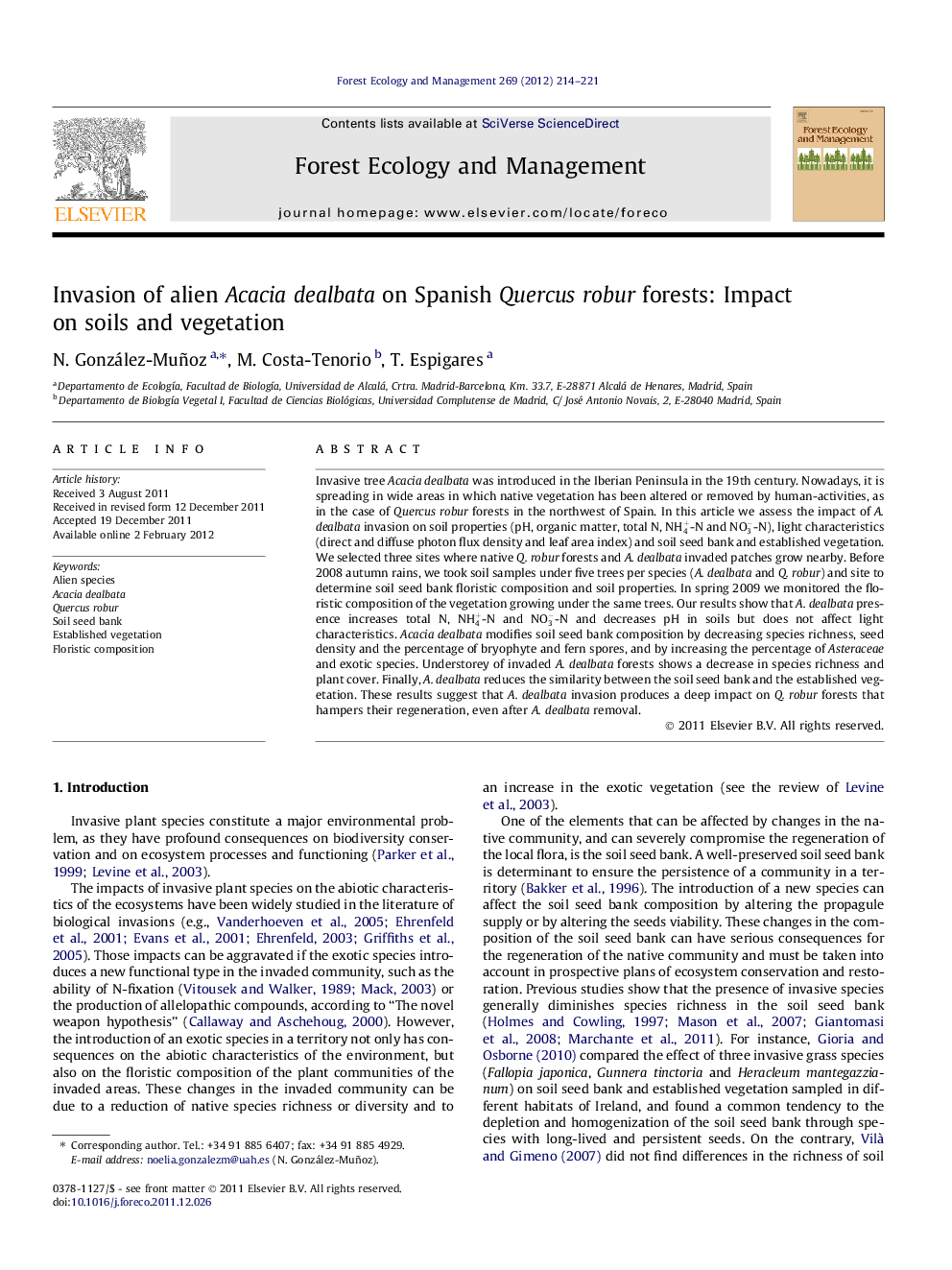| Article ID | Journal | Published Year | Pages | File Type |
|---|---|---|---|---|
| 87458 | Forest Ecology and Management | 2012 | 8 Pages |
Invasive tree Acacia dealbata was introduced in the Iberian Peninsula in the 19th century. Nowadays, it is spreading in wide areas in which native vegetation has been altered or removed by human-activities, as in the case of Quercus robur forests in the northwest of Spain. In this article we assess the impact of A. dealbata invasion on soil properties (pH, organic matter, total N, NH4+-N and NO3--N), light characteristics (direct and diffuse photon flux density and leaf area index) and soil seed bank and established vegetation. We selected three sites where native Q. robur forests and A. dealbata invaded patches grow nearby. Before 2008 autumn rains, we took soil samples under five trees per species (A. dealbata and Q. robur) and site to determine soil seed bank floristic composition and soil properties. In spring 2009 we monitored the floristic composition of the vegetation growing under the same trees. Our results show that A. dealbata presence increases total N, NH4+-N and NO3--N and decreases pH in soils but does not affect light characteristics. Acacia dealbata modifies soil seed bank composition by decreasing species richness, seed density and the percentage of bryophyte and fern spores, and by increasing the percentage of Asteraceae and exotic species. Understorey of invaded A. dealbata forests shows a decrease in species richness and plant cover. Finally, A. dealbata reduces the similarity between the soil seed bank and the established vegetation. These results suggest that A. dealbata invasion produces a deep impact on Q. robur forests that hampers their regeneration, even after A. dealbata removal.
► Acacia dealbata increases nitrogen in soils but decreases pH. ► It decreases species richness and seed density in the seed bank. ► In the seed bank, it increases Asteraceae and exotic species presence. ► It decreases species richness and plant cover of established vegetation. ► This invasion deeply impacts Quercus robur forest, hampering native forest regeneration.
